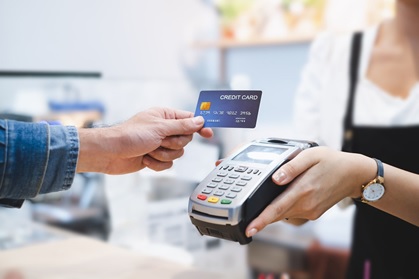Overview
Contactless payment is a secure method of payment which allows the customers to pay the seller for the goods and services using their debit or credit card while being in close proximity. The customers have to tap or wave the card on the card reader machine and after that the amount is automatically deducted from the bank account. A study done by Juniper Research found that 53% of global transactions at POS (Point of Sale) will become contactless within the next 5 years.

Source: Investopedia.Com
Methods
The contactless payments can be done through the use of
- Debit or credit card,
- Smartcard,
- Or any other payment device which has RFID technology and near-field communication.
Massive Rise in Usage of Contactless Payments
There is a rise in the use of contactless payments during the pandemic. The customer found it safe to pay via these payment methods as there is no physical contact between them. Before the Covid-19 pandemic, the rise in the usage of such technology was expected to happen over the period of next few years but the pandemic accelerated the process to just a few months as the people found it as a very safe and hygienic way of doing transaction.
Commonly used methods
The most commonly used and preferred method of payment is via the tap and pay feature which is offered by all the major credit cards. If the card has a Wi-Fi symbol on it then it means that it has a tap and pay or tap and go feature which is optional and can be enabled by the user. The user can also set a limit on the amount of money that can be transferred using the contactless feature.
How advantageous are Contactless Payments?
- The use of contactless payments is very quick and convenient method.
- There is no risk of carrying a lot of cash in hand.
- The user’s time is saved as there is no waiting in long queues during busy hours of checkout.
- It is easier to make unplanned or impulsive purchases whenever required.
- There are many loyalty programs offered by the shopkeepers which is beneficial to the user.
Disadvantages of Contactless Payments
- The major drawback of these types of payments is that if the card is lost or stolen, as it doesn’t require any PIN or authorized signature it can be misused by anyone till the feature is disabled by the user.
- Any payment made using the credit attracts a surcharge of one to two percent and any payment made from a debit card is free.
- There is low acceptance of contactless payments.
- There is low transaction limit for contactless payments.
- There are technical limitations as it does not work in all the devices but only works with RFID technology.
- There may be limited availability of these payment modes internationally and additional fees may also apply.
Role of contactless payments in the Pandemic
A Mastercard survey done in 2020 showed that 79% of the respondents had transitioned to contactless payments “citing safety and cleanliness as key drivers.” According to another survey, 30% of the respondents started using contactless payments when the pandemic began and 70% of the respondents are going to continue using contactless payments post pandemic too. During the pandemic consumers were scared to use cash due to the spread of the COVID- 19 virus and consumers were looking to find a safe mode of doing transactions and contactless payments were seen as a safe way to pay as there was no physical contact between them. Many consumers transitioned to it and there was a boom in contactless payments compared to the traditional usage of cash.
The reason for the sudden boom of the contactless payments was due to the pandemic which accelerated the adoption among the consumers and currently there is a high demand globally for using contactless payments. From the petty sellers to any MNC, they offer contactless payments to attract the customers.
Twinkle Chitalia
I MBA ,DSCE
